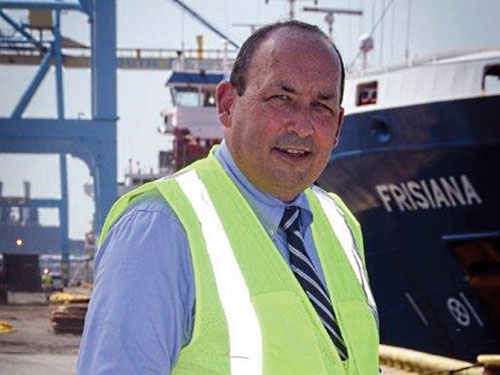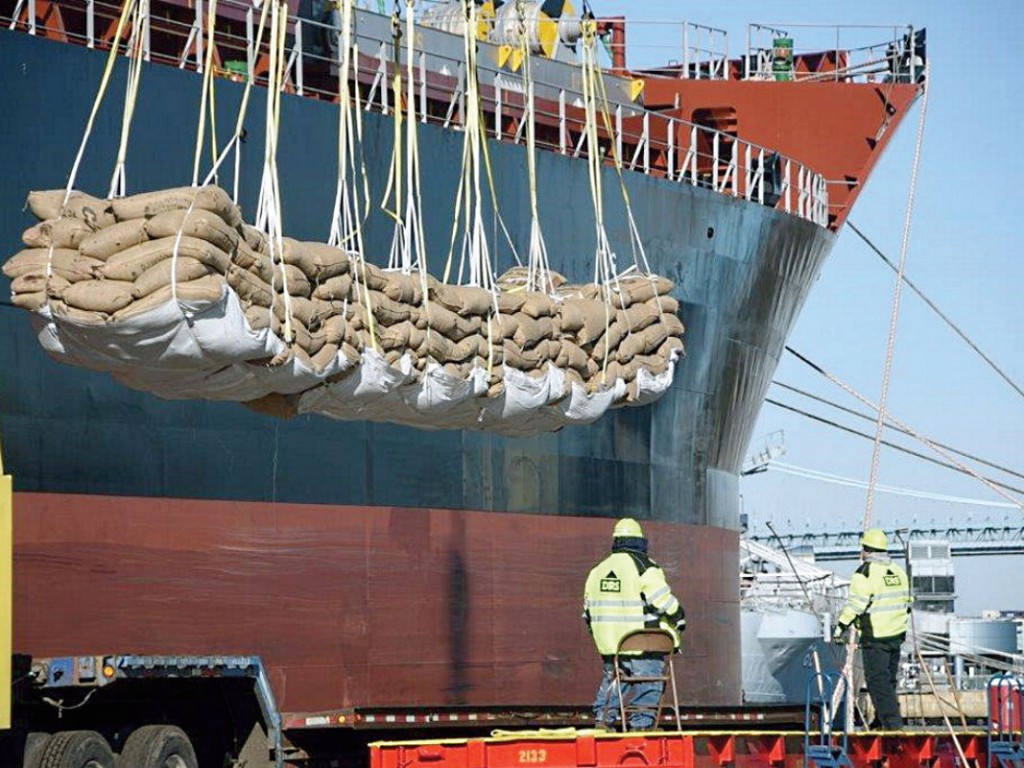With former Port of New York and New Jersey executive Andrew Saporito now at the helm, the South Jersey Port Corp. is setting the course for its next half-century, building upon its longstanding strengths in handling breakbulk and bulk cargos while bringing new facilities online.
“We’ve started to look strategically at what we want to be in the future,” said Saporito, who became the SJPC’s executive director and chief executive officer last July after more than 37 years with the Port Authority of New York and New Jersey, including as deputy director of the port department and most recently as senior adviser.

Saporito, a lifelong Jerseyite who had just retired in June from the Port Authority of New York and New Jersey but soon found himself back at work in South Jersey, said, “The one thing I always wanted to do was work for a port that’s just a port. Being able to come to an operation that is just port-centered and port-focused is what I really wanted to do.
“When opportunity knocks, you take it, especially when it’s in your home state,” said Saporito, who came to the South Jersey Port Corp. following departures of longtime SJPC executives Kevin Castagnola and Jay Jones in 2018 and 2019, respectively. “It was the perfect job at the perfect time.”
Saporito’s coming aboard times nicely with the advent of Paulsboro Marine Terminal, on a 190-acre former BP tank farm property directly across the Delaware River from Philadelphia International Airport. The terminal’s 50-acre first phase opened in 2017, with its second phase within a year and a half of completion, Saporito said, adding that SJPC leaders are working with operator Holt Logistics to capitalize upon the offshore wind energy boom.
“With all the contracts being awarded for offshore wind projects, it [Paulsboro] is probably the ideal facility for a lot of people for a lot of different reasons, looking to either move product in to be moved offshore or for manufacturing,” said Saporito, who noted that a primary current activity at the nascent terminal continues to be importation of Russian steel slabs, of which more than 1.1 million tons were received in 2019.
SJPC’s rail-served Salem Marine terminal, as well as the quasigovernmental entity’s Camden facilities, also may offer opportunities for handling wind-related cargos, he added.
“Right now, we’re going through a strategic review to figure out what the best approach is to retain and grow the overall business we handle today in steel and forest products and other bulk materials,” he said. “Longer term, I really think we’re going to need to look at a master plan for the New Jersey side of the Delaware River.”
That longer-term plan may include further terminal development, in addition to Paulsboro, Camden’s Joseph A. Balzano and Broadway marine terminals, and bulk sand operations at Salem Marine Terminal, according to Saporito.
“As Paulsboro really starts to bloom and grow, there are probably other properties along the Delaware River where we may want to kick the tires and see what else we can attract to this region,” he said. “We’ll have to see if it makes sense. It is something I do want to look at in the next one to two years.”

Meanwhile, both the Balzano and Broadway terminals are continuing to go strong with their traditional cargo mixes, including cocoa bean and forest product imports, according to Saporito.
“We’re trying to determine what type of investment we need to make to continue the operations in those terminals – anything from rehabbing existing buildings to adding new buildings – depending upon what our customer base says their needs and demands are,” he said.
Upgrade of terminal rail links is a priority, with such work at the Broadway terminal, buoyed by a state grant, nearing completion and sights now set on securing further state funding to support rail improvements at the Balzano facility.
Saporito said the SJPC is in “recruitment mode,” to bring in additional new executive and engineering staff members to help facilitate sustained growth.
Another SJPC pursuit is figuring out how it may benefit from engagement with the America’s Marine Highway initiative of the U.S. Maritime Administration.
Furthermore, SJPC leadership is continuing efforts with the national Foreign-Trade Zones Board to make the most of the port’s FTZ No. 142.
“I’m looking at how we utilize the Foreign-Trade Zone status, even up in our Camden facilities, to provide a little value-added for our steel customers and forest product customers who bring in products that may be tied to quotas or other things,” Saporito said.
“We have a lot of people with a lot of experience in handling breakbulk commodities, and I think that’s a real strength this port has,” he said. “It’s something I’m really proud of, because they’ve all stepped up and given 150 percent to make this place work.
“Last year,” Saporito continued, “the port celebrated its 50th year of operations, so, going into our 51st and 52nd years, it’s what the next chapter for the port is and how we get there. That’s something we’re working on this year.”




